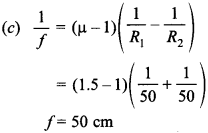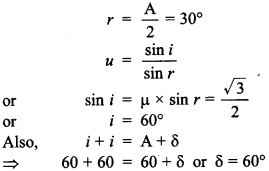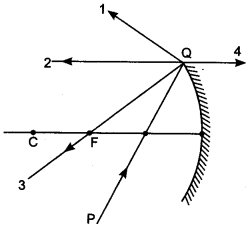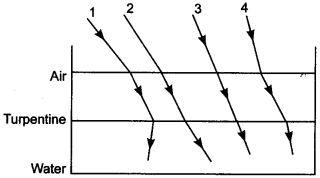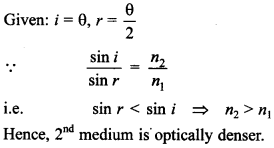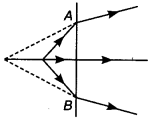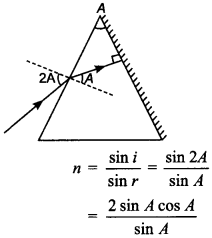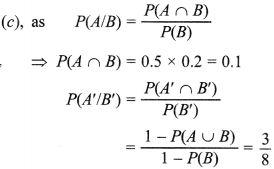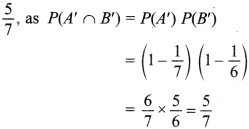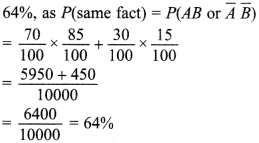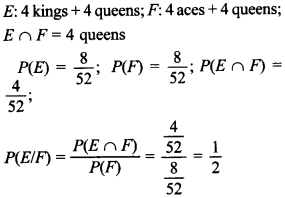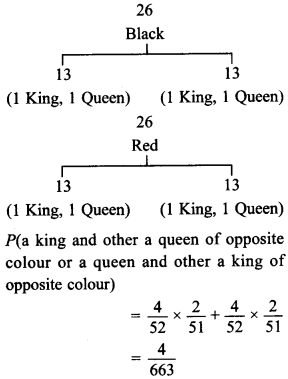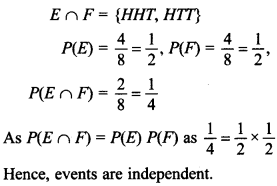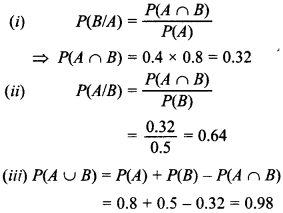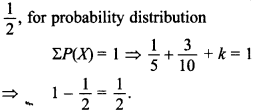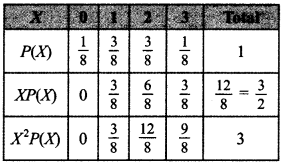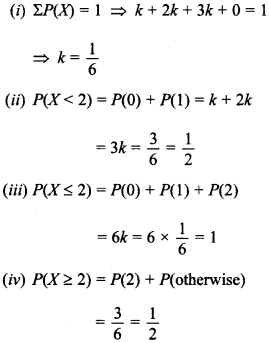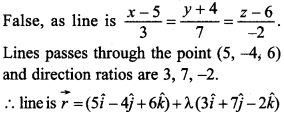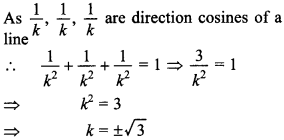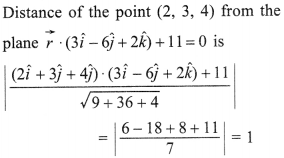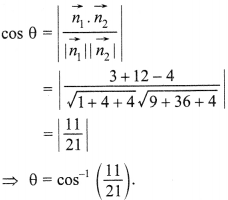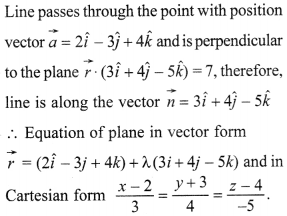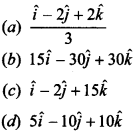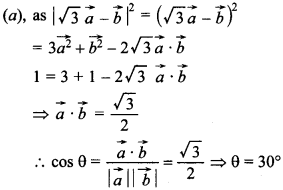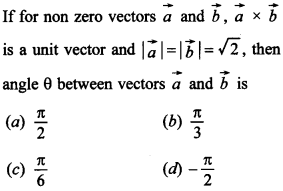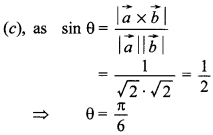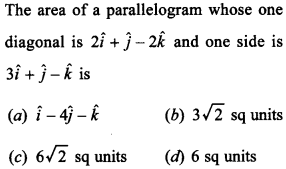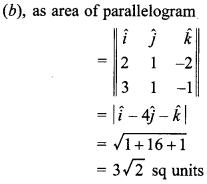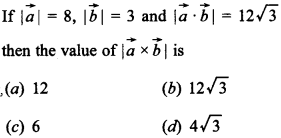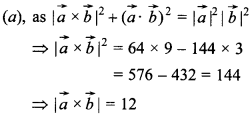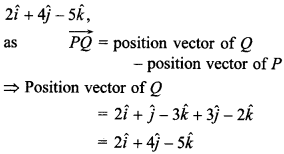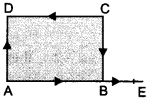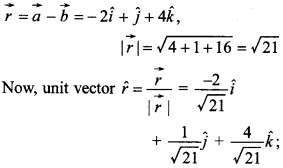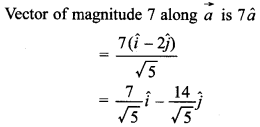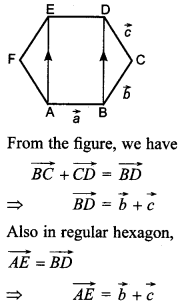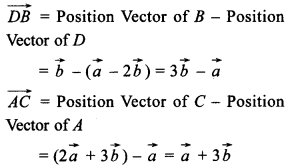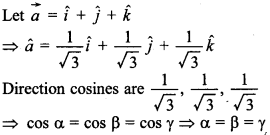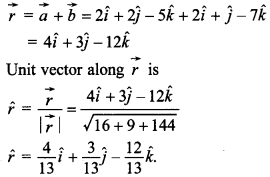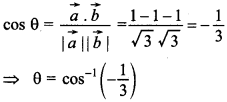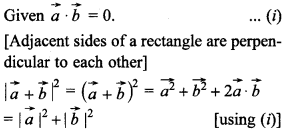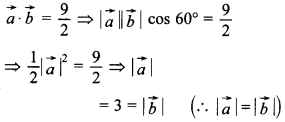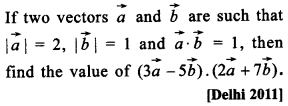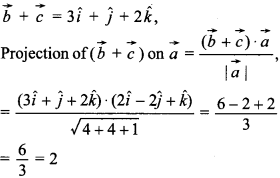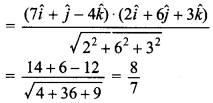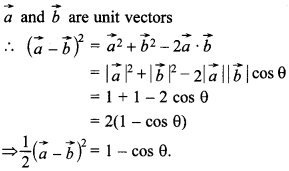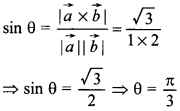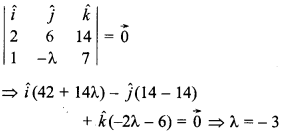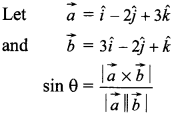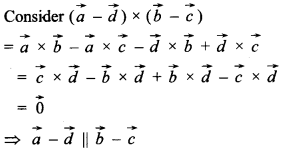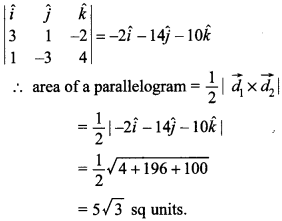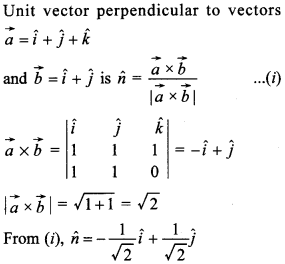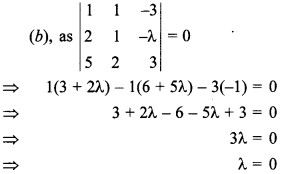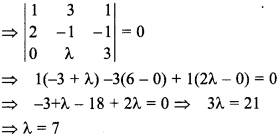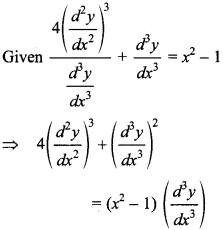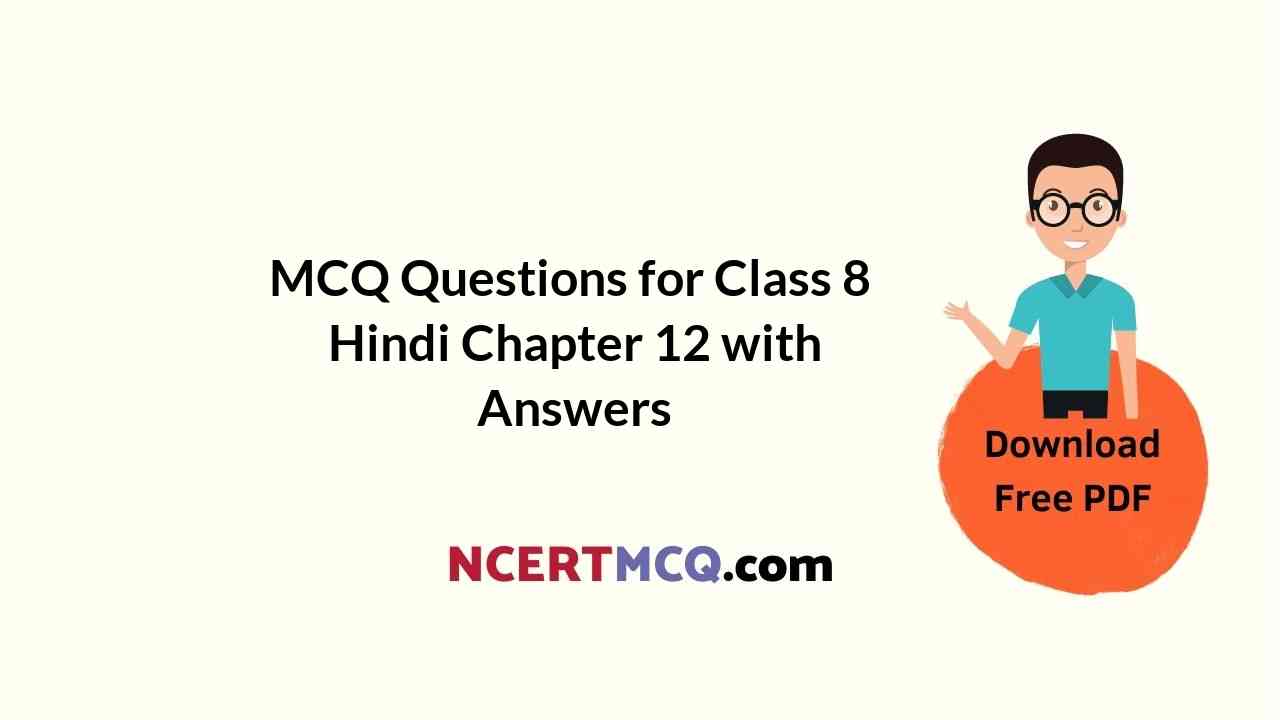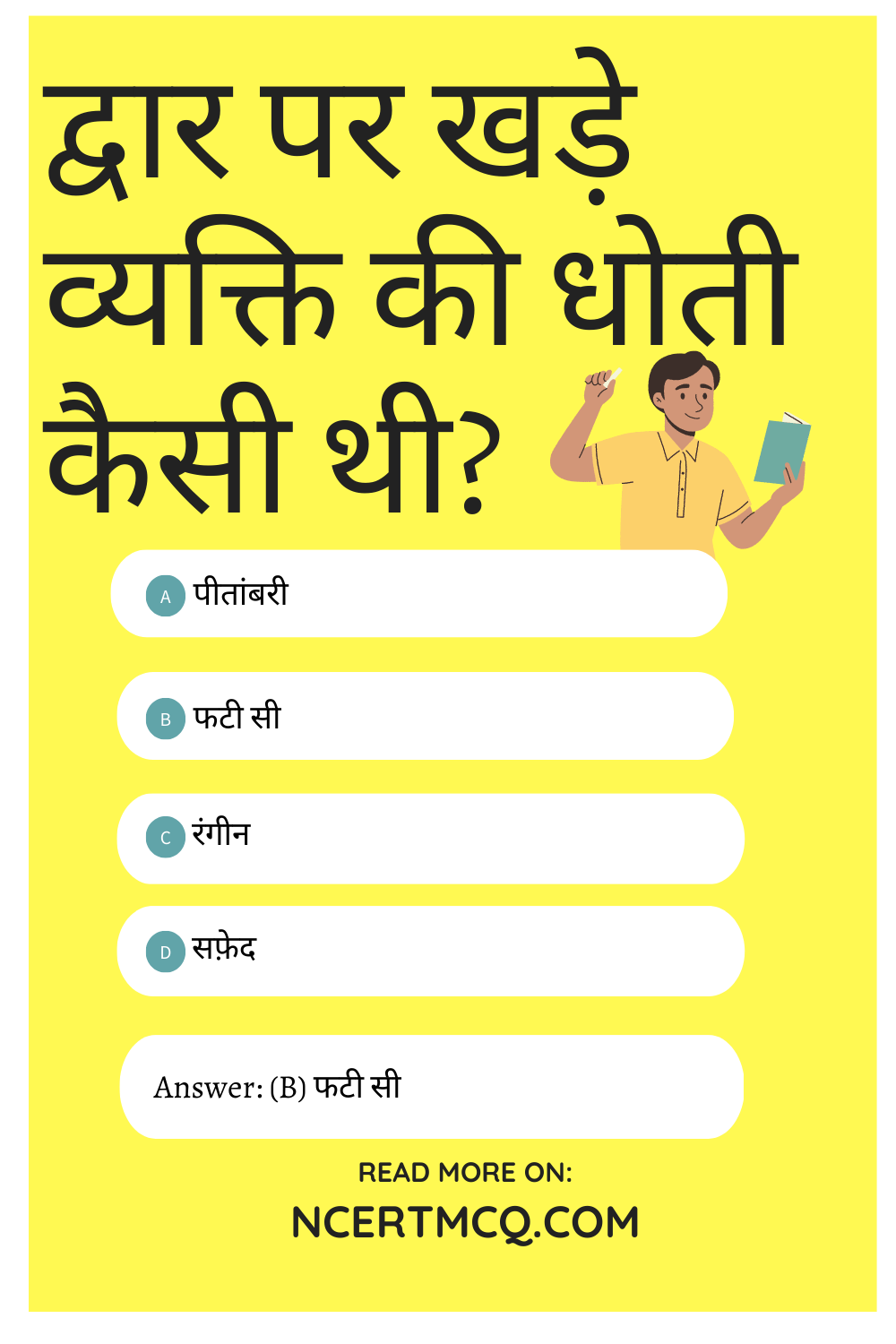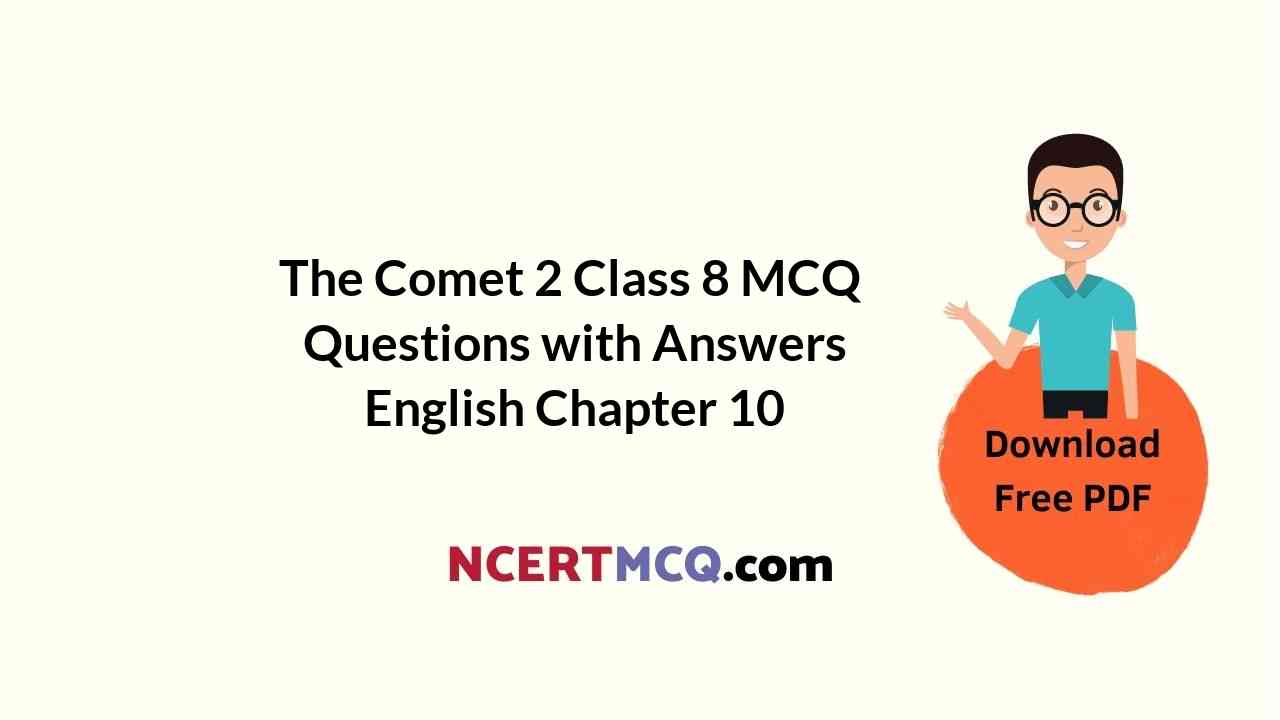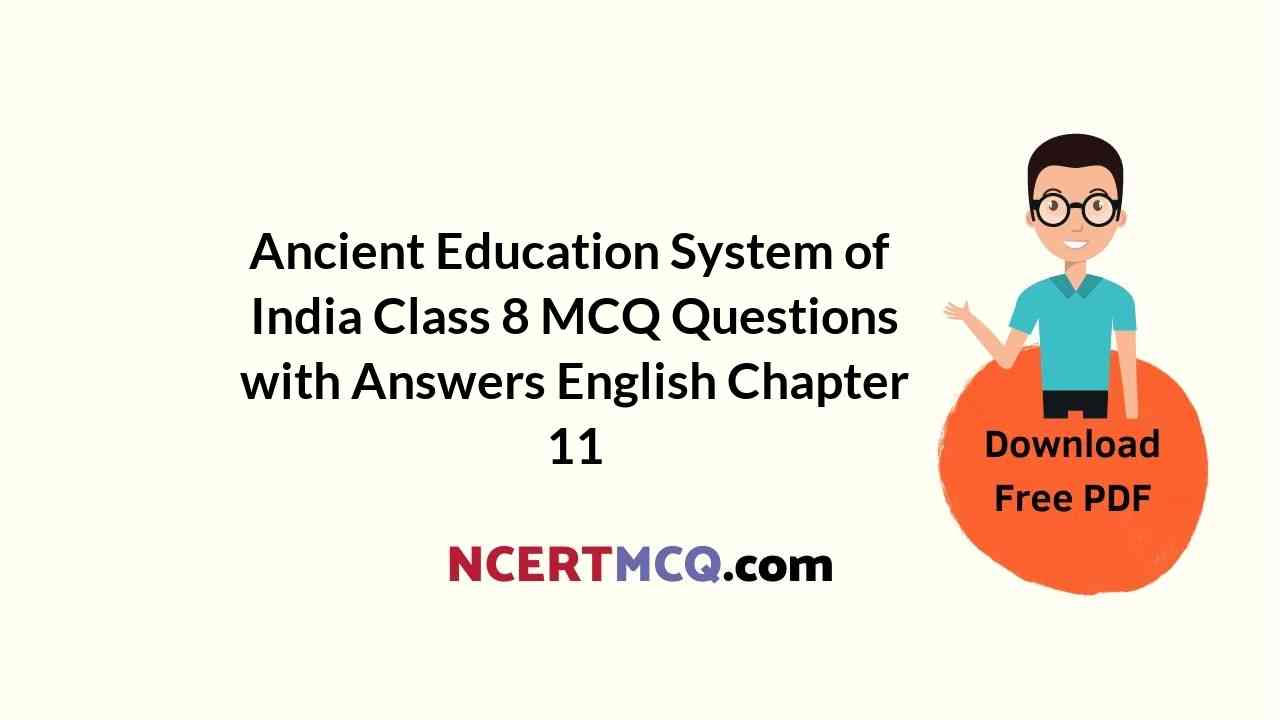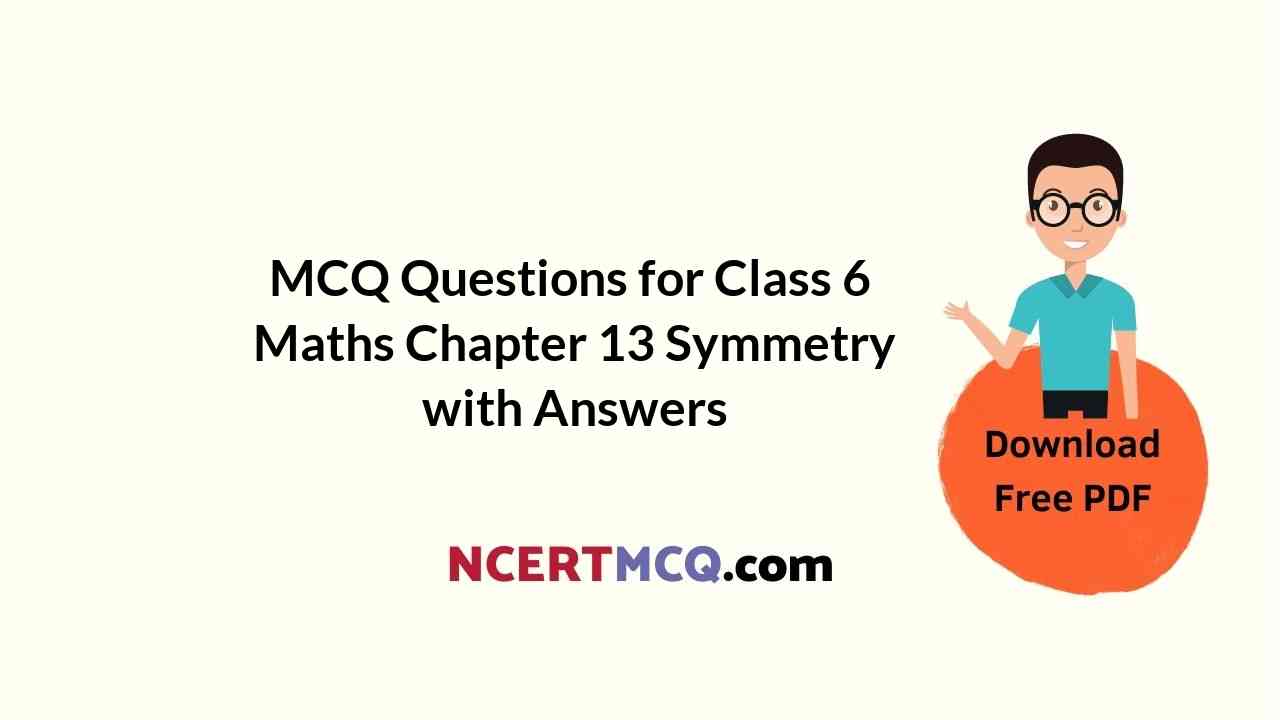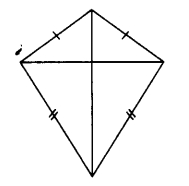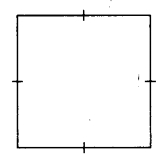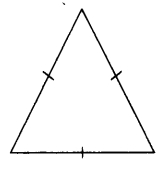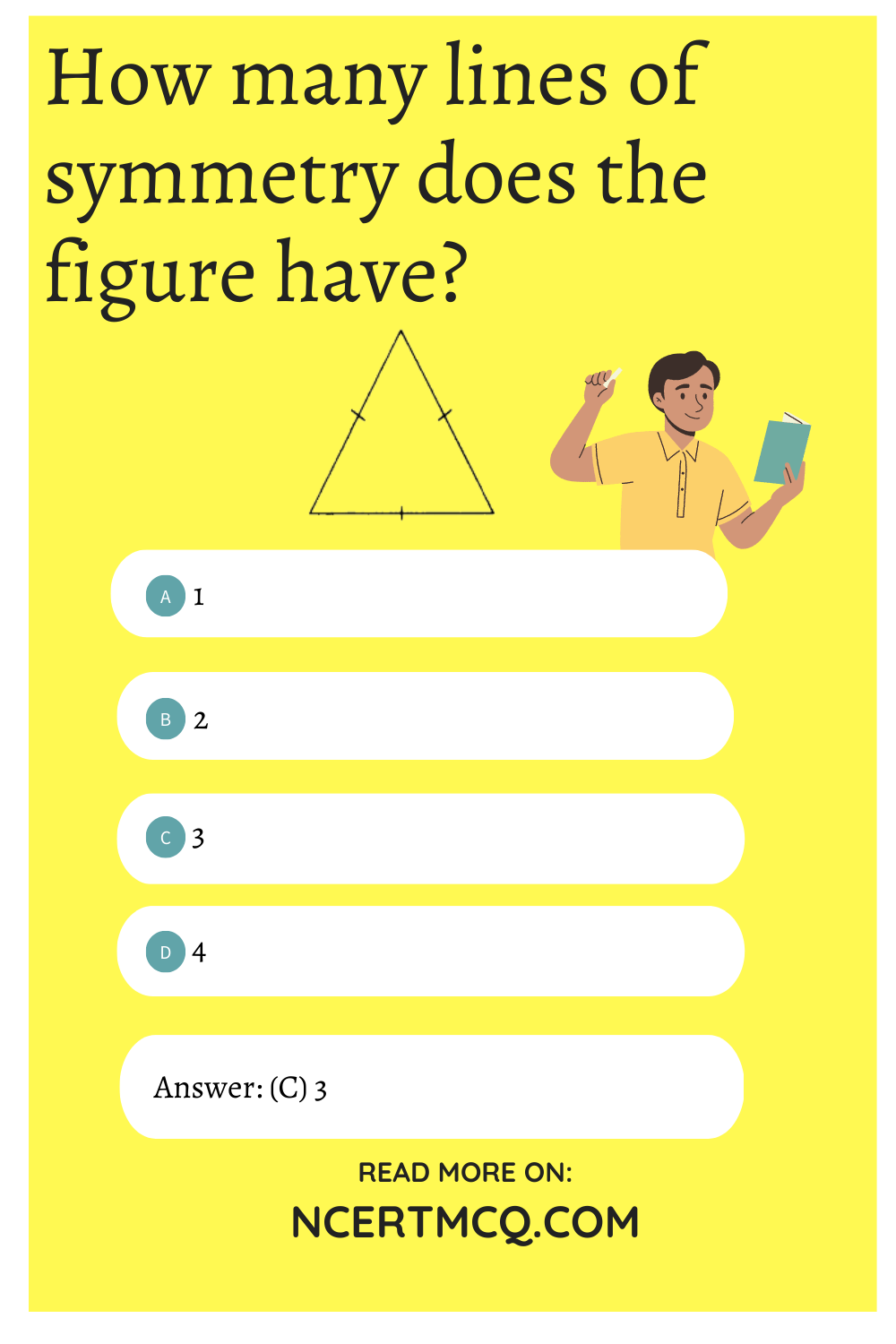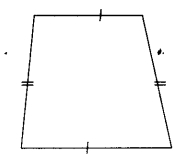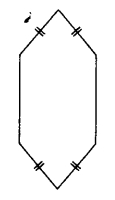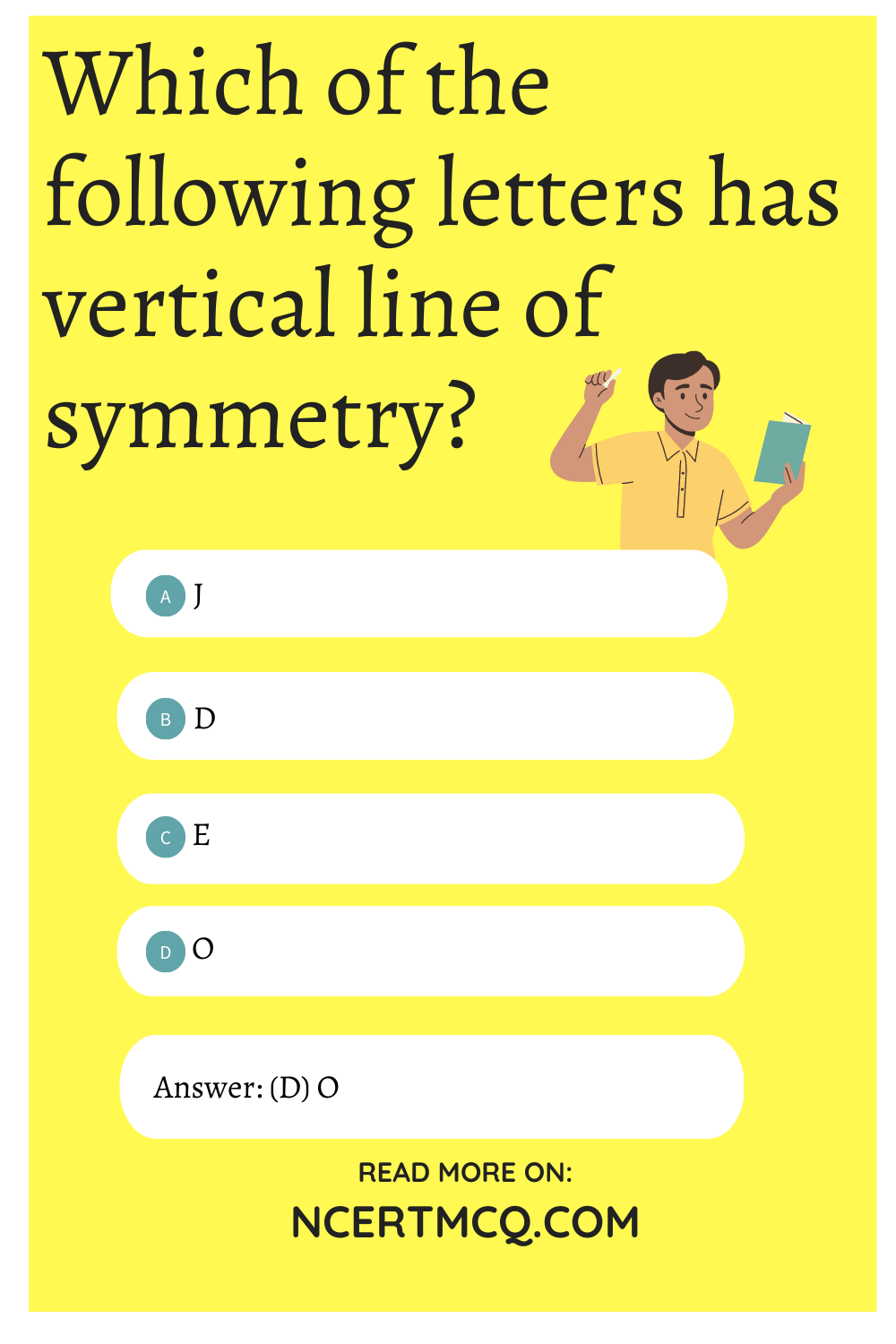Free PDF Download of CBSE Physics Multiple Choice Questions for Class 12 with Answers Chapter 10 Wave Optics. Physics MCQs for Class 12 Chapter Wise with Answers PDF Download was Prepared Based on Latest Exam Pattern. Students can solve NCERT Class 12 Physics Wave Optics MCQs Pdf with Answers to know their preparation level.
Wave Optics Class 12 Physics MCQs Pdf
MCQ on Wave Optics Class 12 Question 1. Resolving power of telescope can be increased by increasing
(a) the wavelength
(b) the diameter of objective
(c) the diameter of eyepiece
(d) the focal length of eyepiece
Answer/Explanation
Answer: b
Explaination:
(b) The diameter of objective as R.P. of a telescope = \(\frac{D}{1.22 \lambda}\) R.P. is proportional 1.22 A to diameter of objective (D).
Wave Optics MCQ Question 2. Polarisation of light proves
(a) corpuscular nature of light.
(b) quantum nature of light.
(c) transverse wave nature of light.
(d) longitudinal wave nature of light.
Answer/Explanation
Answer: c
Explaination: (c) transverse wave nature of light.
Wave Optics Class 12 MCQ Question 3. The wavefront due to a source situated at infinity is
(a) spherical
(b) cylindrical
(c) planar
(d) circular
Answer/Explanation
Answer: c
Explaination: (c) The wavefront due to any source situated at infinity is planar.
4. A laser beam is coherent because it contains
(р) waves of several wavelengths.
(b) incoherent waves of a single wavelength.
(c) coherent waves of several wavelengths
(d) coherent waves of a single wavelength.
Answer/Explanation
Answer: d
Explaination: (d) coherent waves of a single wavelength.
MCQ on Wave Optics Pdf Question 5. If two sources have a randomly varying phase difference Φ(t), the resultant intensity will be given by

Answer/Explanation
Answer: c
Explaination:
(c) 2I0, For two incoherent sources, the resultant intensity at every point is just twice of the two individual intensities.
6. According to Huygens’ principle, light is a form of
(a) particle
(b) rays
(c) wave
(d) radiation
Answer/Explanation
Answer: c
Explaination:
(c) According to Huygens’ principle, light travels in the form of a longitudinal wave.
Optics MCQ 14 Question 7. Two coherent monochromatic light beams of intensities I and 41 superimpose. The maximum and minimum possible intensities in the resulting beam are:
(a) 5I and I
(b) 5I and 3I
(c) 3I and I
(d) 9I and I
Answer/Explanation
Answer: d
Explaination:

Wave Optics Questions with Answers Pdf Question 8. What is path difference for destructive interference?
(a) nλ
(b) n(λ +1)
(c) (2n + 1)\(\frac{\lambda}{2}\)
(d) (n +1)\(\frac{\lambda}{2}\)
Answer/Explanation
Answer: c
Explaination:
(c) (2n + 1)\(\frac{\lambda}{2}\) For destructive interference, the path difference is an odd multiple of λ/2.
9. When exposed to sunlight, thin films of oil on water of ten exhibit brilliant colours due to the phenomenon of
(a) interference
(b) diffraction
(c) dispersion
(d) polarisation
Answer/Explanation
Answer: a
Explaination: (a) interference
10. What happens, if the monochromatic light used in Young’s double slit experiment is replaced by white light?
(a) No fringes are observed.
(b) All bright fringes become while.
(c) All bright fringes have colour between violet and red.
(d) Only the central fringe is white and all other fringes are coloured.
Answer/Explanation
Answer: d
Explaination: (d) At central bright fringes of all wavelength overlap to produce white central fringe.
11. When compact disk is illuminated by a source of white light, coloured lines are observed. This is due to
(a) dispersion
(b) diffraction
(c) interference
(d) refraction
Answer/Explanation
Answer: b
Explaination: (b) The small ripples on the compact disc split white light into the constituent colours.
12. An unpolarised beam of intensity I0 is incident on a pair of nicols making angle of 60° with each other. The intensity of right emerging from the pair is

Answer/Explanation
Answer: d
Explaination:
![]()
13. When unpolarised light beam is incident from air onto glass (n = 1.5) at the polarising angle.
(a) Reflected beam is polarised completely
(b) Reflected and refracted beams are partially polarised
(c) Refracted beam is plane polarised
(d) Whole beam of light is refracted
Answer/Explanation
Answer: b
Explaination: (b) The reflected fight is completely polarised.
14. Resolving power of microscope depends upon
(a) wavelength of light used (directly proportional)
(b) wavelength of light used (inversely proportional)
(c) frequency of light used
(d) focal length of objective
Answer/Explanation
Answer: b
Explaination:

15. The phenomenon of interference is based on
(a) conservation of momentum.
(b) conservation of energy.
(c) conservation of momentum and energy.
(d) quantum nature of light.
Answer/Explanation
Answer: b
Explaination: (b) conservation of energy
16. A double slit interference experiment is carried out in air and the entire arrangement is dipped in water. The fringe width
(a) increases
(b) decreases
(c) remains unchanged.
(d) fringe pattern disappears.
Answer/Explanation
Answer: b
Explaination:
(b) Decreases

17. In Young’s double slit experiment, if the monochromatic source of yellow light is replaced by red light, the fringe width
(a) increases
(b) decreases.
(c) remains unchanged.
(d) the fringes disappear
Answer/Explanation
Answer: a
Explaination: (a) Increases, as fringe width β ∝ λ(λyellow < λed)
18. In Young’s double-slit experiment, the intensity at the central maximum is I0 if one of the slit is covered, then the intensity at the central maximum become:

Answer/Explanation
Answer: c
Explaination:
![]()
19. The angle of incidence at which reflected light is totally polarised for reflection from air to glass (refractive index n) is

Answer/Explanation
Answer: d
Explaination:
(d) Polarising angle,
i = tan-1 (n), (Brewster’s law)
20. In Young’s double-slit experiment, the intensity is I at a point, where the path difference is \(\frac{\lambda}{6}\) (λ – wavelength of light used). If I0 denotes the maximum intensity then \(\frac{I}{I_{0}}\) is equal to

Answer/Explanation
Answer: c
Explaination:
(c) As path difference,

21. The idea of secondary wavelets for the. propagation of a wave was first given by
(a) Newton
(b) Huygens
(c) Maxwell
(d) Fresnel
Answer
Answer: b
22. Light propagates rectilinearly, due to
(a) wave nature
(b) wavelengths
(c) velocity
(d) frequency
Answer
Answer: a
23. Which of the following is correct for light diverging from a point source?
(a) The intensity decreases in proportion with the distance squared.
(b) The wavefront is parabolic.
(c) The intensity at the wavelength does not depend on the distance.
(d) None of these.
Answer
Answer: a
24. The refractive index of glass is 1.5 for light waves of X = 6000 A in vacuum. Its wavelength in glass is
(a) 2000 Å
(b) 4000 Å
(c) 1000 Å
(d) 3000 Å
Answer
Answer: b
25. The phenomena which is not explained by Huygen’s construction of wavefront
(a) reflection
(b) diffraction
(c) refraction
(d) origin of spectra
Answer
Answer: d
26. A laser beam is used for locating distant objects because
(a) it is monochromatic
(b) it is not chromatic
(c) it is not observed
(d) it has small angular spread.
Answer
Answer: d
27. Two slits in Young’s double slit experiment have widths in the ratio 81 :1. The ratio of the amplitudes of light waves is
(a) 3 :1
(b) 3 : 2
(c) 9 :1
(d) 6:1
Answer
Answer: c
28. When interference of light takes place
(a) energy is created in the region of maximum intensity
(b) energy is destroyed in the region of maximum intensity
(c) conservation of energy holds good and energy is redistributed
(d) conservation of energy does not hold good
Answer
Answer: c
29. In a double slit interference pattern, the first maxima for infrared light would be
(a) at the same place as the first maxima for green light
(b) closer to the centre than the first maxima for green light
(c) farther from the centre than the first maxima for green light
(d) infrared light does not produce an interference pattern
Answer
Answer: c
30. To observe diffraction, the size of the obstacle
(a) should beX/2, where X is the wavelength.
(b) should be of the order of wavelength.
(c) has no relation to wavelength.
(d) should be much larger than the wavelength.
Answer
Answer: b
31. The angular resolution of a 10 cm diameter telescope at a wavelength of 5000 A is of the order of
(a) 106 rad
(b) 10-2 rad
(c) 10-4 rad
(d) 10-6 rad
Answer
Answer: d
32. The velocity of light in air is 3 * 108 ms-1 and that in water is 2.2 * 108 ms” . The polarising angle of incidence is
(a) 45°
(b) 50°
(c) 53.74°
(d) 63
Answer
Answer: c
33. An optically active compound
(a) rotates the plane of polarised light
(b) changes the direction of polarised light
(c) does not allow plane polarised light to pass through
(d) none of these
Answer
Answer: a
34. Consider a light beam incident from air to a glass slab at Brewster’s angle as shown in Figure.
A polaroid is placed in the path of the emergent ray at point P and rotated about an axis passing through the centre and perpendicular to the plane of the polaroid.
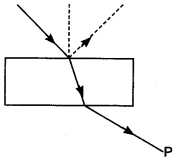
(a) For a particular orientation there shall be darkness as observed through the polaroid.
(b) The intensity of light as seen through the polaroid shall be independent of the rotation.
(c) The intensity of light as seen through the polaroid shall go through a minimum but not zero for two orientations of the polaroid.
(d) The intensity of light as seen through the polaroid shall go through a minimum for four orientations of the polaroid. [NCERT Exemplar]
Answer
Answer: c
35. Consider sunlight incident on a slit of width 104 A. The image seen through the slit shall
(a) be a fine sharp slit white in colour at the centre.
(b) a bright slit white at the centre diffusing to zero intensities at the edges.
(c) a bright slit white at the centre diffusing to regions of different colours.
(d) only be a diffused slit white in colour. [NCERT Exemplar]
Answer
Answer: a
36. In a Young’s double slit experiment, the source is white light. One of the holes is covered by a red filter and another by a blue filter. In this case
(a) there shall be alternate interference patterns of red and blue.
(b) there shall be an interference pattern for red distinct from that for blue.
(c) there shall be no interference fringes.
(d) there shall be an interference pattern for red mixing with one for blue. [NCERT Exemplar]
Answer
Answer: c
37. Figure shows a standard two slit arrangement with slits S1 S2. P1 P2 are the two minima points on either side of P (Figure). At P2 on the screen, there is a hole and behind P2 is a second 2- slit arrangement with slits S3, S4 and a second screen behind them. [NCERT Exemplar]

(a) There would be no interference pattern on the second screen but it would be lighted.
(b) The second screen would be totally dark.
(c) There would be a single bright point on the second screen.
(d) There would be a regular two slit pattern on the second screen.
Answer
Answer: d
38. Consider the diffraction pattern for a small pinhole. As the size of the hole is increased
(a) the size decreases.
(b) the intensity decreases.
(c) the size increases.
(d) the intensity decreases. [NCERT Exemplar]
Answer
Answer: a
39. For light diverging from a point source
(a) the wavefront is spherical.
(b) the intensity increases in proportion to the distance squared.
(c) the wavefront is parabolic.
(d) the intensity at the wavefront does not depend on the distance.
Answer
Answer: a
40. A continuous locus of particles of medium vibrating in the same phase at any instant is known as _______ .
Answer/Explanation
Answer:
Explaination: wavefront
41. Superposition of two waves in the same phase ‘ to produce maximum intensity is known as _______ interference.
Answer/Explanation
Answer:
Explaination: constructive
42. Phenomenon of bending of light around comers of a small obstacle and spreading into region of geometrical shadow is called _______ of light.
Answer/Explanation
Answer:
Explaination: diffraction
43. Resolving power of an optical instrument is _______ to limit resolution.
Answer/Explanation
Answer:
Explaination: reciprocal
44. Plane of polarisation is _______ to plane of vibration.
Answer/Explanation
Answer:
Explaination: perpendicular
45. For a destructive interference, phase difference between wave is _______ .
Answer/Explanation
Answer:
Explaination: (2n – 1)π
46. Path difference between two waves, having wavelength X and undergoing constructive interference is _______ .
Answer/Explanation
Answer:
Explaination: nλ
47. What is a phase difference between two points on the same wavefront?
Answer/Explanation
Answer:
Explaination: Zero.
48. Sketch the shape of wavefront emerging from a point source of light and also mark the rays.
Answer/Explanation
Answer:
Explaination:
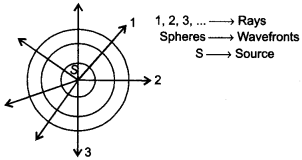
49. What type of wavefront will emerge from a
(i) point source, and
(ii) distant light source?
Answer/Explanation
Answer:
Explaination:
(i) Point source — Spherical wavefront.
(ii) Distant light source—Plane wavefront.
50. Draw the wavefront coming out of a convex lens when a point source of light is placed at its focus.
Answer/Explanation
Answer:
Explaination:

51. Draw the wavefront, if a point source is placed at point 2F of a convex lens.
Answer/Explanation
Answer:
Explaination:

52. When monochromatic light travels from one medium to another its wavelength changes but frequency remains the same. Explain. [NCERT Example, Delhi 2011]
Answer/Explanation
Answer:
Explaination:
When a monochromatic light is incident on the surface separating two media, the atoms of the media interact with the light and may be viewed as oscillators, which take up the frequency of light causing forced oscillations.
Thus, the frequency remains same. But in medium, the speed changes, and accordingly the wavelength changes.
53. When light travels from a rarer to a denser medium, the speed decreases. Does the reduction in speed imply a reduction in the energy carried by the light wave?
Answer/Explanation
Answer:
Explaination: No, as energy ∝ (amplitude)² and is independent of speed of wave.
54. What is meant by interference of light?
Answer/Explanation
Answer:
Explaination:
The phenomenon of non-uniform distribution of energy in a medium due to the superposition of two light waves from two coherent sources is called interference of light.
55. The interference fringe pattern according to the theory is hyperbola. What is the condition for seeing nearly straight fringes?
Answer/Explanation
Answer:
Explaination:
If distance between the plane of the two coherent sources and screen is very large compared to the fringe width; the fringes will be nearly straight lines.
56. Why are coherent sources required to create interference of light?
Answer/Explanation
Answer:
Explaination:
Without coherent sources, the intensity of the interference pattern will not be sustained.
57. State the reason, why two independent sources of light cannot be considered as coherent sources.
Answer/Explanation
Answer:
Explaination: They cannot keep a constant phase difference.
58. In the wave picture of light, intensity of light is determined by the square of the amplitude of the wave. What determines the intensity of light in the photon picture of light. [NCERT Example]
Answer/Explanation
Answer:
Explaination:
In photon picture, the intensity is determined as
![]()
59. What is the effect on the interference fringes in a Young’s double slit experiment if the screen is moved away from the plane of the slits?
Answer/Explanation
Answer:
Explaination:
The angular separation of the fringes remains constant (=λ/d). The actual linear separation of the fringes increases in proportion to the distance of the screen from the plane of the two slits.
60. What is the ratio of the fringe width for bright and dark fringes in Young’s double slit experiment? [HOTS]
Answer/Explanation
Answer:
Explaination: 1 : 1
61. How many interference fringes will be seenthe separation if the size of each slit is \(\left(\frac{1}{5}\right)^{th}\) the separation between the two slits?
Answer/Explanation
Answer:
Explaination:

62. How does the fringe width, in Young’s double slit experiment, change when the distance of separation between the slits and screen is doubled? [AI2012]
Answer/Explanation
Answer:
Explaination:
\(\beta=\frac{\lambda D}{d}\) As β ∝ D, when the distance between the slits and the screen is doubled.
The fringe width will also get doubled.
63. When a monochromatic source is replaced by a source of white light in Young’s double-slit experiment, then which colour will appear closest to the central white fringe.
Answer/Explanation
Answer:
Explaination:
The fringe closest on either side of the central white fringe is red.
Explaination: For a point P for which S2P – S1P = \(\frac{\lambda_{b}}{2}\)
where λb represents wavelength for blud colour, the blue component will be absent and red colour fringe will appear. [λb < λR]
64. What is the effect on the interference fringes in a Young’s double slit experiment, if the width of the source slit is increased? [NCERT Example]
Answer/Explanation
Answer:
Explaination:
As the source slit width increases, the fringe pattern gets less and less sharp. When the source slit is so wide that the condition s/S ≤ λ/d is not satisfied, the interference pattern disappears.
65. One of the two slits in Young’s double slit experiment is so painted that it transmits half the intensity of the other. What is the effect on interference fringes? [HOTS]
Answer/Explanation
Answer:
Explaination: The contrast between the bright and dark fringes decreases.
66. Why does the intensity of the secondary maximum become less as compared to the central maximum?
Answer/Explanation
Answer:
Explaination:
As the order increases only \(\frac{1}{n^{\mathrm{th}}}\) (where n is an odd number) of the slit will contribute in producing brightness at a point in the diffraction. So, the higher order maxima are not so bright as the central.
67. How does the angular separation of interference fringes change, in Young’s experiment, if the distance between the slits is increased?
Answer/Explanation
Answer:
Explaination: Decreases, as θ = \(\frac{\lambda}{d}\)
68. What is the condition that only interference is observed in double slit experiment, diffraction is not?
Answer/Explanation
Answer:
Explaination:
When \(\frac{a}{d}\) << 1 then the diffraction pattern will become very flat and we observe only the interference pattern.
69. How are interference and diffraction consistent with the principle of conservation of energy?
Answer/Explanation
Answer:
Explaination:
In interference and diffraction, the light energy is redistributed. If it reduces in one region, producing a dark fringe, it increases in another region, producing a bright fringe. There is no gain or loss of energy, and the two phenomena are consistent with the principle of conservation of energy.
70. Why does the bluish colour predominate in a clear sky?
Answer/Explanation
Answer:
Explaination:
Our eyes are more sensitive to blue colour.
71. An unpolarised light of intensity 1 is passed through a polaroid. What is the intensity of the light transmitted by the polaroid?
Answer/Explanation
Answer:
Explaination:
\(\frac{I}{2}\) as it will get polarised.
72. If the angle between the axis of polariser and the analyser is 45°, write the ratio of the intensities of original light and the transmitted light after passing through the analyser.
Answer/Explanation
Answer:
Explaination:
As I = \(\frac{I_{0}}{2}\) cos² θ, where I0 is the original intensity and 0 is the angle between the axis of the polariser and the analyser.

73. Does the value of polarising angle depend on the colour of light?
Answer/Explanation
Answer:
Explaination: Yes, as μ = tan ip and μ ∝ \(\frac{1}{\lambda^{2}}\)
We hope the given Physics MCQs for Class 12 with Answers Chapter 10 Wave Optics will help you. If you have any query regarding CBSE Class 12 Physics Wave Optics MCQs Pdf, drop a comment below and we will get back to you at the earliest.

